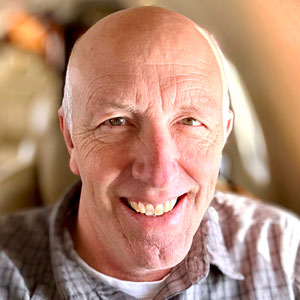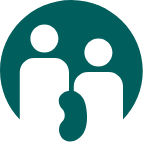If you or someone you love needs a kidney transplant, the Find a Kidney website offers a wide range of resources and support to help you search for a living donor. Register now and take the first step toward finding a match.
My Kidney Transplant Story: Matt Freund
When I was diagnosed with PKD at 15, I knew a transplant was in my future. Decades later at age 52, I found out how much I didn’t know about the process. Now, looking back, I’m amazed by how much the National Kidney Registry (NKR) transformed my experience.

When I started the transplant journey in earnest, I had the misconception that I think a lot of transplant recipients do. I knew that I needed a good kidney match, and I thought the best way to do that would be with a relative. I thought that surely relatives would be more closely matched than the general population.
What became clear as the process unfolded was that the relative advantage only applied with siblings, which offered a one in four chance of a perfect match. Well, one of my siblings was prediabetic, so she was out. Another proceeded through the screening until they found a tumor in his intestines, so that ruled him out too. My wife and my mom also made it through the initial screening but were eliminated during the onsite evaluation.
During my first meeting with my surgeon at Mayo, he explained how the NKR’s matching system gave me better odds—that it was a doorway to a national network of donors, recipients, and centers all working together to find the best possible matches.
Matt Freund
I chose the Mayo Clinic as my transplant center because of its reputation—I had no idea they were part of the NKR network, or how that would improve my chances of finding the best match. During my first meeting with my surgeon at Mayo, he explained how the NKR’s matching system gave me better odds—that it was a doorway to a national network of donors, recipients, and centers all working together to find the best possible matches.
He also gave me a primer on eplet matching and why it was the new frontier, and a newer, higher resolution way of looking at how donor kidneys are matched to a recipient. He said that with a zero or low eplet mismatch, I’d have a lower chance of rejection and graft failure, meaning the kidney I receive would last longer. That piqued my interest.
As we went through the process, my sister-in-law was cleared as a donor. Her blood type was A and mine was O, so we were not a match, but the NKR’s Voucher Program turned out to be an incredible option. Not only did it give me the chance to find a low eplet mismatch, it also allowed my donor to be fully recovered by the time my surgery happened, which is a big benefit for family members.
At first, we were shooting for a zero eplet mismatch, but as time went on, we widened the criteria to low eplet mismatches, which expanded the opportunities.
The whole process worked beautifully. My sister-in-law donated in early 2023, and by fall, I had my new kidney—from a kind stranger in Utah who donated on behalf of her mom. My surgery went great—I had minimal pain and a quick recovery, and my low eplet mismatch kidney is working well.
Throughout my transplant journey, I was looking for a way to return to flying without complications. Flying is something I’ve always been passionate about, and I was fortunate to have it as my career.
While the eplet matching aspect didn’t have a direct impact on my flying career, the difference is that my transplant will probably last longer. This definitely bodes well for my ability to keep flying in the future.
From a quality of life standpoint, my number one objective was to get a kidney that would last for my whole life. My career is important to me, but being alive is even more important. Getting a low eplet mismatch really improved my chances of a quality long-term outcome.

